Sent to me by my friend Nina. Â The saddest part is I would eat this and enjoy it.
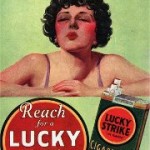 The Masters of Social Gastronomy Cut the Fat
The Masters of Social Gastronomy Cut the Fat
@ Public Assembly, Williamsburg, Brooklyn
FREE (but please RSVP here so we bring enough samples)
For every supposedly innovative weight loss fad, there is a century-old counterpart. From low-carb diets to extreme mastication,calorie counting to calisthenics, Sarah will reveal the radicals and pseudo-scientists that invented America’s favorite dieting trends.
Soma will pull back the curtain on the dieting industry, from the shadowy producers of diet pillsto our dear frozen friends at Healthy Choice. See what happens when Budweiser battles South Beach, and how marketing muscle can be found in an IBM computer from the 60′s. Featuring kickbacks, intrigue and many many cigarettes.
At Storytime, we’ll figure out whether tapeworm diets, negative calories and other crazy ideas are fact or fiction?
***
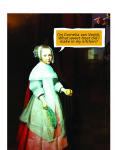 CORNELIA VAN VARICK’S HOLIDAY KITCHEN
CORNELIA VAN VARICK’S HOLIDAY KITCHEN
Saturday, December 1st 2-4 pm
The New York Historical Society
RSVP required at familyprograms@nyhistory.org; $10 materials fee
Dutch families in New Amsterdam were known for their delicious holiday confections—can you imagine all the good smells that would have come out of their kitchens?
During this program, participants will take the place of Cornelia van Varick in her seventeenth-century kitchen as she prepares traditional food for the New Year. We’ll handle objects and ingredients that Cornelia would have had, such as sugar cones and nippers, Dutch ovens, and mortar and pestles. Then we’ll use them to make two Dutch holiday treats, orange caraway cookies and fried doughnuts, that participants can taste and take home.
ABOUT AT THE KIDS’ TABLE
This is a series of three  family programs on New York City’s food history. Each two-hour program allows participants to experience historic foodways through an exploration of kitchen objects based on the New-York Historical Society’s collection and cooking. The first program focuses on seventeenth-century Dutch food traditions, the second on how kitchen tools have changed since the early nineteenth century, and the third on how food rationing affected families during WWII. Sign up for one or all programs in the series!
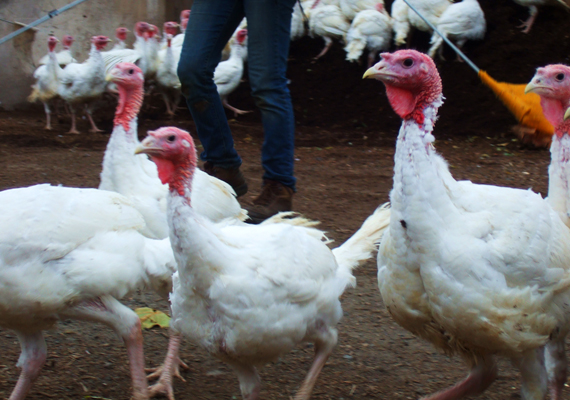 Broad Breasted White turkeys, the most common breed of turkey eaten for Thanksgiving.
Broad Breasted White turkeys, the most common breed of turkey eaten for Thanksgiving.I recently spent time with a couple hundred Thanksgiving turkeys at the Stone Barns Agriculural Center, about an hour north of New York City. Â I give the details of my adventures in my latest article for Etsy, which you can read here. Â But roasting my turkey today got me thinking about those gobbling birds I met before they became dinner. Â Below, a conversation I had with Stone Barns livestock manager Craig Haney.
There is a certain disconnect between these frisky turkeys and what ends up at Thanksgiving dinner. Â In less than two weeks, the turkeys would be slaughtered on site by the farmers who raised them. Â I asked Craig how that felt.
“I wouldn’t say I’m sad. Â There are some birds you get more attached to, they stand out for whatever reason. Â But even then, I know why we raise them. Â I’m excited about people buying their turkeys from us. Â I take pleasure and pride in that–the idea that they’re all going to people’s homes, that they’ll be relished and enjoyed.”
For Craig, slaughtering the turkeys signals the end of the season, and the end to intensive farm labor for the year–just as it did 100 years ago or more. Â Craig doesn’t care which turkey ends up on his dinner table, he likes both the Broad Breasted Whites and the Bourbon Reds; but he has little to do with cooking on the big day. Â “My wife cuts me a lot of slack,” he admits. Â But it seems appropriate to the historic spirit of the holiday: Craig spent six months getting that bird from chick to carcass; but his wife will get it to the Thanksgiving table.
From Harper’s Weekly, November 28th, 1885.
THANKSGIVING MARKETING.
The Washington Market of to-day is not the Washington Market of old.  It is a much fresher and more healthy-looking place than the old ramshackle affair of former years.  The Thanksgiving Eve surroundings of Washington market are, however, the same now as they have ever been.  The busy buyers of turkeys and other Thanksgiving Day edibles swarm about it like bees around a hive, and jostle one another in its narrow passageways.  Big turkeys and little turkeys hang, cold in death, from rows upon rows of cruel hooks, their plump or skinny, white or pinkish breasts decorated with little bright-colored rosettes, in mockery of the pitiless fate that has already befallen them, and the cruel mutilation which is to overtake them on the morrow.  Ducks and geese and chickens are piled in mounds on the zinc covered countered, and the carcasses of fallen deer hand from hooks, while banks of green-topped celery and rosy-cheeked apples lend color to the scene.  Small tradesmen fill up the spaces between the regular market stalls with appetizing stores of hares, rabbits, and other small game, and big butchers in iron-starched white or checked aprons move around like jolly warders at a fair.  At the street corners outside of the market little rosy-cheeked girls, and old women whose cheeks are no longer rosy, sit behind huge baskets of oranges and apples.
[In this image] The evening rush has not yet set in. Â A few hours later, and the passageway will be almost impassable, and there will be an indescribable confusion of sounds, as shrill-voiced women clamor for Thanksgiving bargains, and the vendors in the market cry forth the excellence of their wholesome wares.
If FDR had not declared Thanksgiving the fourth Thursday of the month instead of the last, November 28th would be Thanksgiving eve this year, too!
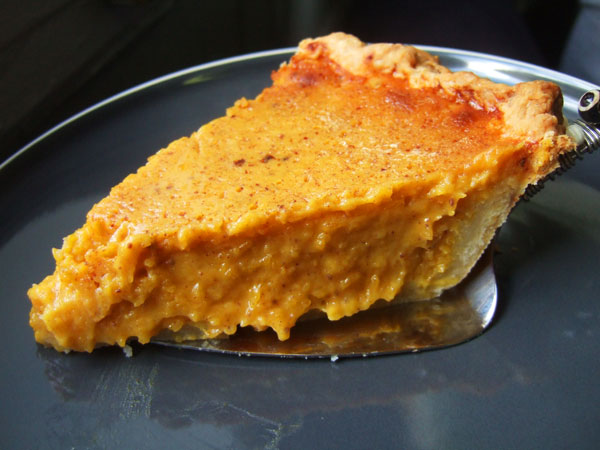 AÂ pumpkin pie with sweetened condensed milk. Can I get a hell yeah?
A pumpkin pie with sweetened condensed milk. Can I get a hell yeah?If you are going to be in NYC anytime in the next month, be sure to stop by the New York Public Library to catch the Lunch Hour NYC exhibit. It’s free and cute and you’ll learn a lot of fun facts about food.
The coolest part of the exihibit is the installation of  a functional automat.  Automats were the precursors to fast food; meals were made from scratch at commissaries all around the city, then shipped to the automat restaurants.  The food was placed behind little windows, and after dropping a few coins in a slot, you could open the doors and retrieve you treats.  A new automat opened, and closed, on St. Mark’s street a few years ago.
Horn & Hardart, the company that innovated the automat concept, was just as well known for the quality of their food as their unique way of delivering it. Â At the Lunch Hour exhibit, you can play with their automat machine, opening the doors and such. Â You won’t find any mac and cheese or baked beans inside, however–but they did thoughtfully include recipes of all the restaurant’s most famous dishes.
 Horn and Hardart’s automat, from Lunch Hour NYC.
Horn and Hardart’s automat, from Lunch Hour NYC.One of the recipes I grabbed when I visited was Hron & Hardart’s recipe for pumpkin pie. Â I had a pie pumpkin hanging out in my kitchen; it had been a Halloween decoration, and I decided it was time for it to go to a better place. Â Inside me. Â I roasted it, which is an easy way to process pumpkin–see how here. Â I also made a crust from scratch from this recipe, which is my go to pie crust.
The filling was easy to mix up and the pie doesn’t bake for long. Â The recipe tells you “Insert a silver knife into the filling about one inch from the side of the pan. Â If the knife comes out clean, the filling is done.” Â I’ve never read pumpkin pie instructions so specific–a silver knife? Â Using this method, the center comes out underdone and extremely creamy. Â I’m not sure if I liked it though, being used to a firmer pie.
But the wildest thing about this pie is I realized I made a HUGE mistake when I baked it that turned out to be wonderful.  I only just now noticed that the recipe calls for evaporated milk NOT sweetened condensed milk, which is what I used.  But holy moly, have you ever made a pumpkin pie with sweetened condensed milk?  It’s astounding.  The caramel-ee flavor of the sweetened condensed milk really comes through in the final product.  Creamy, burnty sugary, pumpkin…awesome.
God pumpkin pie is great. Â Why don’t we make it year round? Â I guess something about it just doesn’t feel right in the summertime.
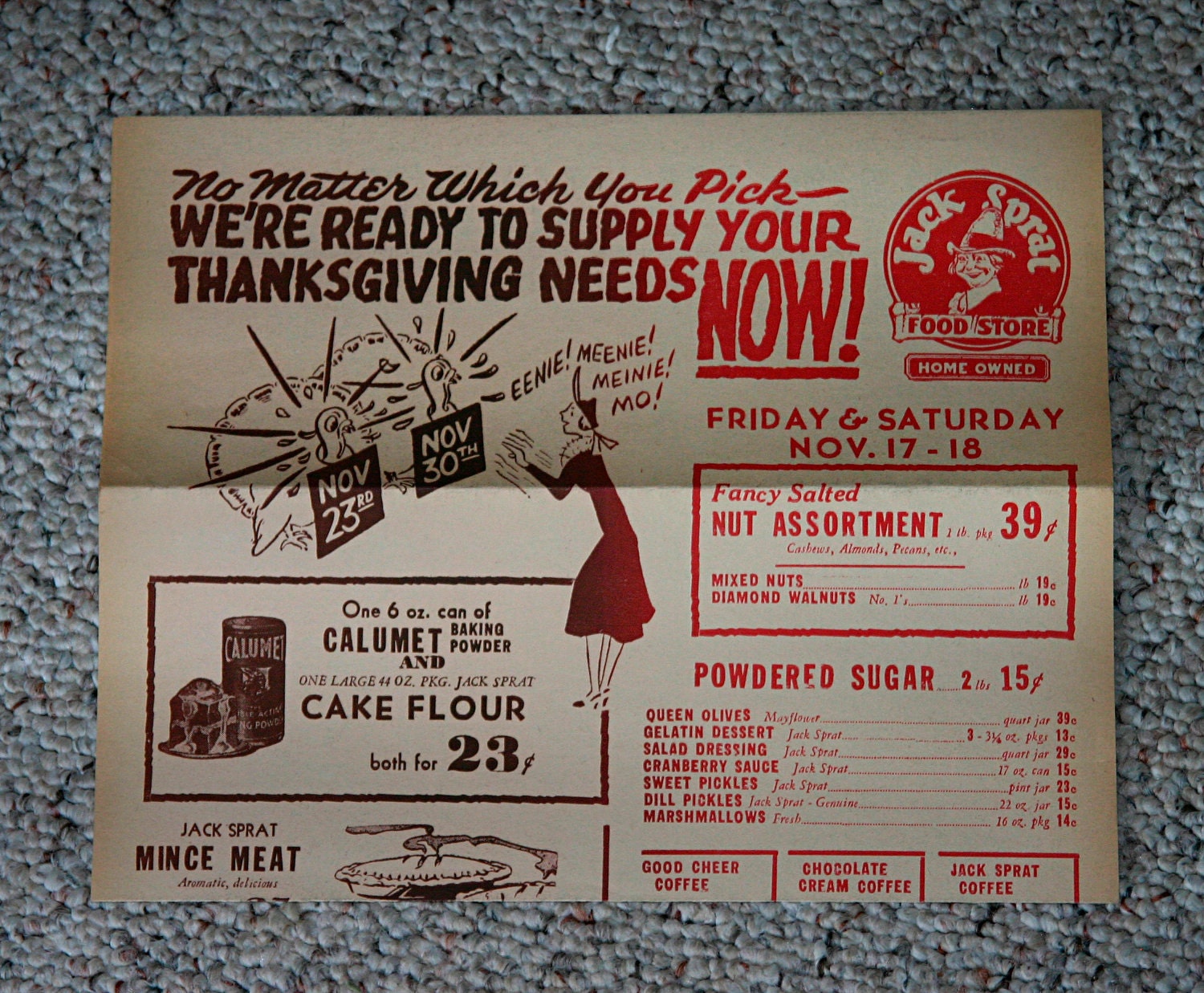 Photo by ohhmystarsandgarters.  Shop on Etsy!
Photo by ohhmystarsandgarters.  Shop on Etsy!
I just finished an article for Etsy all about the legacy of canned cranberry sauce (you can read it here.) Â While I was browsing around for historical Thanksgiving themed items, I found the wonderful piece of ephemera pictures above.
Take a close look at it. Â What the hell is going on here? Â “No matter which you pick…” Â Why are their two Thanksgivings?
The Etsy shop’s owner dates this piece to 1939, and it was produced by the Jack Sprat grocery store in Wykoff, Minnesota. Â This is slightly off topic, but the Wykoff family is one of the oldest in America. Â A Dutch family that settled in Brooklyn–then Breuckelen–their 1652 family home is a museum, and it the oldest residence in New York City.
Back to the Thanksgiving–a quick Googling of Thanksgiving 1939 gives us the answer. Â Stay with me, this gets complicated.
 Thanksgiving was declared a national holiday by Abraham Lincoln in 1863; he traditionally celebrated the holiday on the last Thursday in November, as did most Americans, although there was no official Thanksgiving day.  November 1939 had five Thursdays–as does November 2012.  Retailers in 1939 had a fit, because that meant the Christmas shopping season, which traditionally started the day after Thanksgiving, was shortened by nearly a week.  It’s the middle of the Great Depression, and the hope is that Christmas shopping will help restart the economy.  The retailers protest to President Franklin Roosevelt, and Roosevelt decides to declare Thanksgiving the fourth Thursday of the month, not the last.
The American people FREAK.  Thanksgiving, more than any other holiday, is invested with tradition (much of it highly fictionalized).  People felt that messing with the day to celebrate Thanksgiving was as bad as taking the turkey off the table.  The Thanksgiving on  November 23rd was dubbed “Franksgiving” in Roosevelt’s honor, and many people protested by celebrating on the traditional day, November 30th.  Some families had double Thanksgiving.
Eventually, we got over it, and to this day we celebrate Thanksgiving on the fourth Thursday of the month, NOT the last. Â But the end of the story is that it doesn’t freaking matter, because nowadays the Christmas shopping season starts on August 1st.
I don’t care that we got a half a foot of snow last night–that’s all the more reason to eat ice cream! So in preparation for holiday gorging (pies a la mode!!), an hour on the history and science of ice cream.
Sarah Lohman of Four Pounds Flour will unearth the stories behind our favorite ice cream treats and share some of history’s wildest bygone flavors–that may be due for a revival. You’ll be able to answer questions like: which came first, chocolate or vanilla? The ice cream sandwich or the ice cream cone? Neapolitan or liquid nitrogen?
Then, Soma will tell you the science behind making the perfect batch at home, and Big Ice Cream’s tricks for plumping up their profit margins. We’ll also track frozen desserts across the globe, from Italian gelato to dondurma, the magically stretchy ice cream from Turkey.
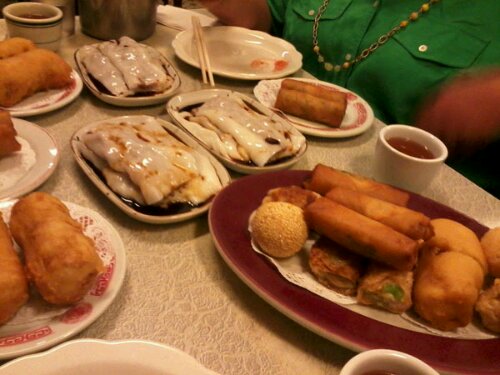
In the midst of Hurricane Sandy, it’s been hard to have anything else on my mind. I was stranded in Cleveland for the storm itself and only made it back to Queens for the aftermath. My neighborhood and my apartment are fine, but many people I love and neighborhoods I know are not. Friends had water in their building lobbies up to their waists; others sat in the dark apartments while they could hear Ground Zero filling up with water. Buildings shook, tress came down, subways became underground oceans–it could have all been much worse, but we were hit hard.
Particularly the Lower East Side, a neighborhood that’s like my second home. In addition to the flooding and downed trees, residents of Lower Manhattan have been without power for nearly a week. After going out in the midst of the hurricane Monday night, the streets were dark until just last night, when the lights finally came back on.
Life has been on hold for a week, and it’s finally starting back up again. In celebration, I’ve decided to write about one of my favorite restaurants on the Lower East Side: The Nom Wah Tea Parlour.
Now Wah is the oldest restaurant in Chinatown, founded in 1920 It’s on Doyers street, on Chinatown’s south border, bumped up next to New York’s courthouse and government district, and a stones throw away from the old Five Points neighborhood. Walking up to the mouth of the street, it doesn’t look at place in the City. It’s not a part of the neat and orderly grid laid out in 1811; it predates it. It’s a single lane, that climbs a small hill; a short street, only a block, that bends at a wonky curve in the middle. That bend used to be called the “Bloody Angle;” this area wasn’t such a nice place in the early 20th century.
The entire effect is not unlike an Escher painting. It’s so old New York, that an inside source told me the sewer system isn’t even part of the city sewers–they’ve got their own, pre-government, antiquated sewage system.
Right at the crook in the street is Nom Wah; it’s only had three owners in its long history. The most recent owner, Wilson Tang, is young and hip; he took it over from his uncle and is dedicated himself to keeping tradition alive, as well as helping the business grow. The interior has remained largely unchanged since the 1950s, and the cash register counter has been there since the beginning.
The restaurant is a Cantonese tea parlor that serves dim sum,–or, various small plates of food meant to be shared. It’s a way of eating that has become more popular in America with immigrants that came from Hong Kong in the 1980s. It’s traditionally thought of as a brunch food, but Nom Wah is open until 10pm, for a new generation that “doesn’t want to get up early.”
The menu offers more than 50 different types of dim sum. I visited with my mother and an old friend from high school, and they put me in charge of ordering. I did well in terms of the types food I choose, but poor in terms of quantity. The menu in unclear how many of each item comes in one “order,” so by ordering three servings of everything, I ordered enough food for a small army. Oops. Be sure to ask your server for help in this regard.
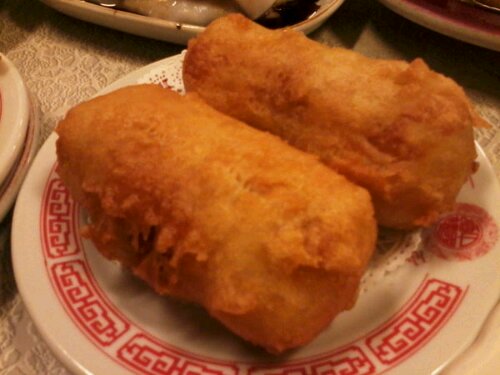
In terms of what to eat, get the pork bun. It was our favorite–a sweet, yeasty steamed bun filled with savory, saucy pork. A close second was the egg roll, which Nom Wah claims to have invented, and is the delicious grandfather to a modern fast food roll. An egg crepe is stuffed with chicken and vegetables, and then rolled and fried, resulting in a particularly crisp, richly satisfying egg roll.
If you live in New York, the businesses here will need you. In areas that have been without power, they have lost a week’s worth of income, and their employees a week’s worth of work. Post power outage, Nom Wah has opened its doors again. So grab a group of friends, and get some dim sum. It’s cheap, it’s warm, it’s comforting–and it’s the perfect back drop to share our stories, and our bitching, about the last week.